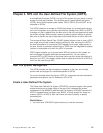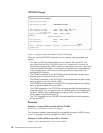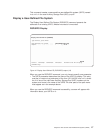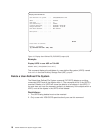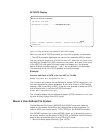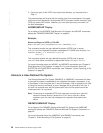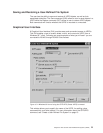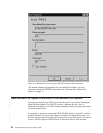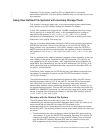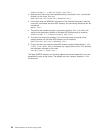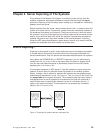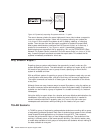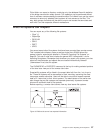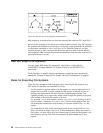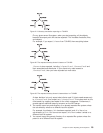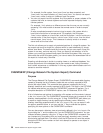directories. For this reason, exporting /DEV or objects within it can cause
administrative difficulties. The next sections describe how you can work around one
such scenario.
Using User-Defined File Systems with Auxiliary Storage Pools
This scenario involves an eager user, a non-communicative system administrator,
and a solution to an ASP problem through the Network File System.
A user, Jeff, accesses and works with the TULAB2 namespace each time he logs
into his account on a remote NFS client. In this namespace exist a number of
user-defined file systems (A.udfs, B.udfs, C.udfs, and D.udfs)inanASP
connected to the namespace as /DEV/QASP02/. Jeff is used to working with these
directories in their familiar form every day.
One day, the system administrator deletes the UDFSs and physically removes the
ASP02 from the server. The next time Jeff logs in, he can’t find his UDFSs. So,
being a helpful user, Jeff creates a /DEV/QASP02/ directory using the CRTDIR or
MKDIR command and fills the sub-directories with replicas of what he had before.
Jeff replaces A.udfs, B.udfs, C.udfs, and D.udfs with 1.udfs, 2.udfs, 3.udfs, and
4.udfs.
This is a problem for the network because it presents a false impression to the user
and a liability on the server. Because the real ASP directories (/DEV/QASPXX) are
only created during IPL by the system, Jeff’s new directories do not substitute for
actual ASPs. Also, because they are not real ASP directories (/DEV/QASPXX), all of
Jeff’s new entries take up disk space and other resources on the system ASP, not
the QASP02, as Jeff believes.
Furthermore, Jeff’s objects are not UDFSs and may have different properties than
he expects. For example, he cannot use the CRTUDFS command in his false
/DEV/QASP02 directory.
The system administrator then spontaneously decides to add a true ASP without
shutting the system down for IPL. At the next IPL, the new ASP will be mounted
over Jeff’s false /dev/qasp02 directory. Jeff and many other users will panic
because they suddenly cannot access their directories, which are “covered up” by
the system-performed mount. This new ASP cannot be unmounted using either the
RMVMFS or UNMOUNT commands. For Jeff and other users at the server, there is
no way to access their directories and objects in the false ASP directory (such as
1.udfs, 2.udfs, 3.udfs, and 4.udfs)
Recovery with the Network File System
The NFS protocol does not cross mount points. This concept is key to
understanding the solution to the problem described above. While the users at the
server cannot see the false ASP and false UDFSs covered by the
system-performed mount, these objects still exist and can be accessed by remote
clients using NFS. The recovery process involves action taken at both the client and
the server:
1. The administrator can export a directory above the false ASP (and everything
“downstream” of it) with the EXPORTFS command. Exporting /DEV exports the
underlying false ASP directory, but not the true ASP directory that is mounted
over the false ASP directory. Because NFS does not cross the mount point,
NFS recognizes only the underlying directories and objects.
Chapter 3. NFS and the User-Defined File System (UDFS) 23
|
|
|



